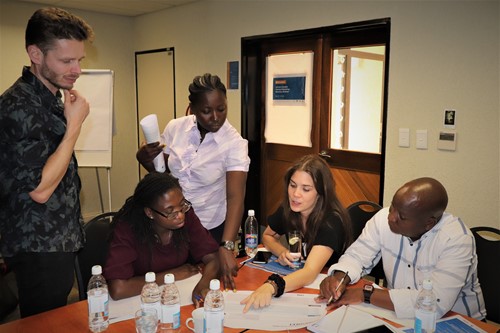Capacity Building & Networking
More than funding, SAIS 2 ensured the long-term success of its outcomes through capacity-building and networking efforts. These efforts gave rise to various training programmes like BOOST UP and a group of networking hubs called “Connected Hubs”.
BOOST UP was a three-part support programme co-organised by SAIS 2 and Connected Hubs, which was newly launched as the Southern Africa Innovation Collective. The programme elevated tech-driven startups’ ability to be investment-ready. To participate in this programme, startups had to provide solutions to societal challenges.

A participant in BOOST UP 2020, Dawa Health is a Zambia-based enterprise that runs an eponymous weekly advisory mobile application for expecting mothers. It features a self-monitoring kit that gives soon-to-be moms access to remote maternal health services.
“It can be hard to find the right partners and working with large organisations and programmes like SAIS 2,” said Tafadzwa Munzwa, Dawa Health’s co-founder alongside Chungu Chama. “And the experience and networks [BOOST UP] brings can make a huge difference to a startup.”
As the 2020 winner of BOOST UP, which doubled as a competition, Dawa Health earned a trip to Finland for two team members and even access to Finnish opportunities.
“I think the biggest benefit I got from BOOST UP was meeting our mentor. In fact, after the programme finished, we formalised this relationship, and our mentor is officially serving on our advisory board,” Tafadzwa said. “The other thing we really appreciated was meeting the other founders. It was amazing to meet other entrepreneurs who have similar experiences to ours.”











